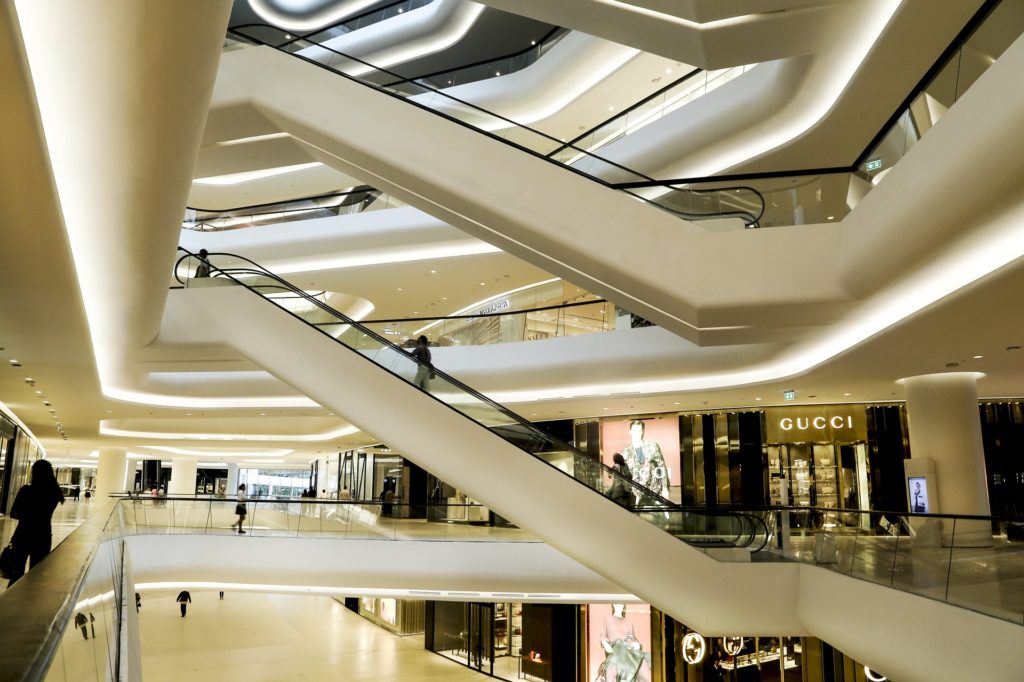The technology tidal wave has washed over every industry, causing several companies to decide whether to sink or swim. Everything from industrial warehouses to medical offices has been impacted, but one CRE sector has felt the blow in a huge way: retail.
The massive shift to online retail is largely responsible for what has been considered the “retail apocalypse” over the last few years. But retail didn’t actually go anywhere. Customers were simply choosing retailers who met their ideal shopping guidelines: convenience and experience. In response, some retailers have opted to refocus their physical spaces and make necessary adjustments to strengthen their brands. Here are a few unique retail additions that are attracting customers and positively affecting the bottom line.
Online Retailers Are Opening Physical Stores
Despite the current extent of online shopping, 90% of global retail sales still take place in a physical store. Rising to the customer experience trend, some digitally native brands have opened brick and mortar stores. These stores include Warby Parker, Casper, Untuckit, and several others. By 2023, digital brands’ physical CRE footprints are likely to expand by 850 stores.
There are a few notable reasons for the “clicks to bricks” movement. The increasing cost of digital advertising may be a big one. Many direct-to-consumer companies have relied on social media advertising for their sales. But as ad costs rise, their need to creatively reach their target customers rises as well. And the other side of the shift may be product-based. Many customers want to experience the product in a tangible way, by trying it on or checking the quality before purchasing it. The customer clearly still finds intrinsic value in the physical retail space.
Retailers Are Including Technology
Augmented and Virtual Reality are both taking the shopping experience to the next level. Massive retailers like Target, Amazon, and Lowes are beginning to use AR, allowing customers to see furniture pieces in their homes before buying them. Some apparel retailers are using devices like smart mirrors, giving customers the chance to see themselves wearing an item before ever physically trying it on. With this feature, customers can change the color or size of an item. Then, the VR platform further immerses the customer in a setting where they would actually wear the item. From test-driving cars in different environments to experiencing outdoor equipment while hiking, the VR technology is stretching the boundaries of retail. These technological possibilities are definitely impacting the customer buying experience.
The Use of Pop-up Shops
Pop-up stores are useful for digital brands to test the waters of the physical store space. Pops-ups allow a brand to open its temporary, physical doors to current customers and gain new customers in the process. Brands then have the opportunity to convert these new customers into loyal digital ones. Traditional retailers can also take advantage of the pop-up store model to test new markets and gain valuable data on their customer base.
The time-frame for a pop-up shop can vary. Some of them last as little as a day, such as a booth space at a day market event. And some pop-ups stay open for months. For the latter, a retailer leases out a storefront or abandoned CRE space. In this case, a CRE broker can help negotiate the right lease to fit the business.
Customer Experience Is Key
According to one market report, 43% of consumers say they would be more likely to purchase more from retailers who offer a better experience. Additionally, 66% of shoppers are more likely to shop in locations that include cafes, restaurants, or bars. And 46% believe that the environment is a main factor of what makes up a meaningful shopping experience. In today’s market, a physical retail space will only be as successful as its level of consumer experience.
The retail CRE sector is still very much alive and thriving. Even in the face of a digital marketplace, retail brands are bridging the technological gap and making their physical space unique. The retailers who immerse customers in a positive brand experience will be the ones who will make the biggest impact in their CRE space.
If you are interested in learning more about investing in commercial real estate, or if you have questions about buying, selling, or leasing a commercial property, please contact an HBRE advisor. Our team of experienced CRE professionals have the skills and insight to assist with all property transactions. To reach out to us directly, email [email protected] or call 615-564-4133.




